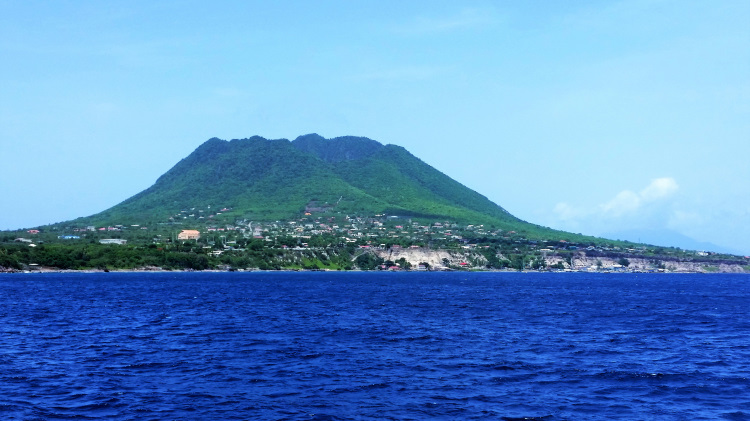
St. Eustatius (“Statia”) is a charming, diminutive tropical island lapped by the Atlantic on the east and the Caribbean on the west; equidistant between North and South America – a central location which provided Statia its early prominence as an 18th century hub for shipping and trade.
So prosperous was this lush, mountainous island, it was called The Golden Rock. But its central location also cursed this Eden.
 The Caribbean basin is one of the world’s major oil producing regions, with Venezuela boasting the western hemisphere’s largest reserves (and refineries), in addition to other producers like Mexico, Columbia, and the Gulf Coast of the US.
The Caribbean basin is one of the world’s major oil producing regions, with Venezuela boasting the western hemisphere’s largest reserves (and refineries), in addition to other producers like Mexico, Columbia, and the Gulf Coast of the US.
While most of the oil produced here is shipped regionally – and predominantly to the US – there’s a deficit of deep water ports there, making Caribbean refining and transfer points critical.
And at the axis of these shipping routes, is Statia.
Although 4,927 miles (7,927km) from Amsterdam, Statia is a municipality of the Netherlands. Roughly five miles long and two miles wide, the island is inhabited by approximately 3,000 residents – mostly clustered in the middle third of the island on a verdant bluff bookended by mountains on one end and a slumbering volcano – the Quill – on the other.
But more dominant than even the 2,000-foot (609m) Quill, is an expanse of oil drums blotting the northwest quadrant of the island. Opened in 1982, and acquired by NuStar Energy L.P. (NuStar) in 2005, the oil terminal contains 67 storage tanks with a capacity of more than 13-million barrels. Another $50 million, five tank expansion was completed in 2012.
“Rising Star of the Energy Industry”
 NuStar is a Fortune 500 company incorporated in Delaware a decade ago, and headquartered in Texas. In the nine months ending September 30, 2011 the firm posted earnings of $391.7 million: an increase of $22.5 million over the same period last year. Their website states the company is, “engaged in the terminalling and storage of petroleum products, the transportation of petroleum products and anhydrous ammonia, and asphalt and fuels marketing,” – and cites 65 terminal and storage facilities around the globe.
NuStar is a Fortune 500 company incorporated in Delaware a decade ago, and headquartered in Texas. In the nine months ending September 30, 2011 the firm posted earnings of $391.7 million: an increase of $22.5 million over the same period last year. Their website states the company is, “engaged in the terminalling and storage of petroleum products, the transportation of petroleum products and anhydrous ammonia, and asphalt and fuels marketing,” – and cites 65 terminal and storage facilities around the globe.
Already the Statia terminal is by far their largest, accounting for 25% of NuStar’s capacity, according to their 2010 annual report. And recently NuStar announced to build an additional 30 to 40 tanks on Statia.
The existing terminal takes advantage of the rolling terrain of the island and a natural buffer – Signal Hill – that mitigates both the presence and view of the blight of tanks, from town. But NuStar plans to add the second terminal south of Signal Hill, on property known to locals as The Farm – because of an historic plantation complex once situated there, and currently an archaeological site.
